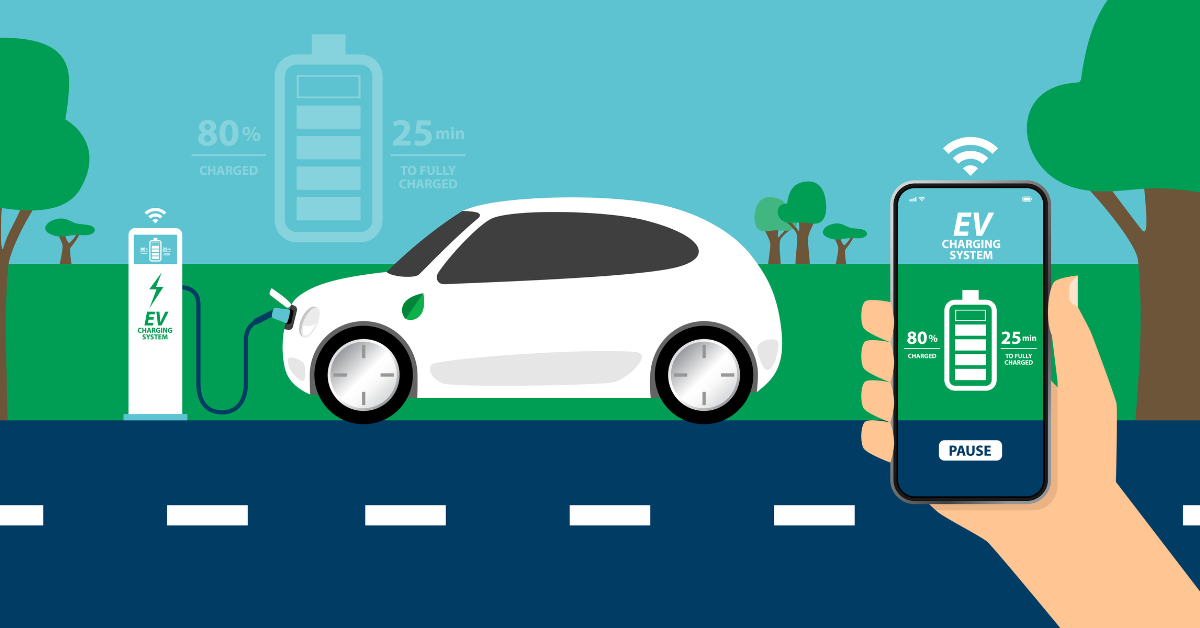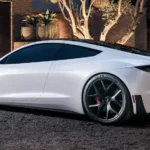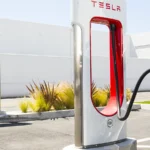
In recent years, India has witnessed a remarkable surge in the demand for electric vehicles (EVs). This shift is driven by a pressing need to combat pollution and reduce carbon emissions, as well as the Indian government’s commitment to fostering a greener future.
To accelerate the transition to sustainable transportation, the government has implemented a range of initiatives and subsidies aimed at encouraging the adoption of electric vehicles.
This article delves into the electric vehicle subsidy revolution in India, exploring its impact on the automotive industry, the environment, and the broader implications for a greener and more sustainable future.
Page Contents
- Government Initiatives for EV Adoption: FAME-II Scheme and Beyond
- Benefits of Electric Vehicle Subsidies: A Win-Win for the Environment and Consumers
- Challenges and Limitations: Navigating the Roadblocks
- Impact on the Automotive Industry: Pioneering the Shift
- Success Stories and Case Studies: Inspiring Change
- Outlook and Roadmap: Accelerating the Transition
- Conclusion
Government Initiatives for EV Adoption: FAME-II Scheme and Beyond
Recognizing the pivotal role of electric vehicles in mitigating environmental concerns, the Indian government introduced the Faster Adoption and Manufacturing of Electric Vehicles (FAME) scheme.
In a recent development, the government has granted approval for Phase-II of the FAME Scheme, allocating a budget of Rs. 10,000 Crore for a period of 3 years starting from April 1st, 2019. The scheme primarily focuses on promoting the adoption of xEVs (electric vehicles) in the country by generating demand through various measures. Approximately 86 percent of the budgetary support has been allocated for Demand Incentive, aiming to create a market for xEVs.
Under Phase-II, the scheme aims to support the deployment of 7,000 e-Buses, 500,000 e-3 Wheeler, 55,000 e-4 Wheeler Passenger Cars (including Strong Hybrid), and 1 million e-2 Wheeler. However, the exact numbers for each category may vary based on the uptake of different types of xEVs, as provisions have been made for flexibility within and between segments.
To be eligible for incentives, vehicles must be equipped with advanced batteries and be registered under the scheme. The emphasis of the scheme is on providing affordable and Eco-friendly public transportation options, primarily targeting vehicles used for public transport or registered for commercial purposes in the e-3W, e-4W, and e-bus segments. Additionally, privately owned registered e-2Ws are also covered under the scheme to cater to the mass market segment.
FAME-II scheme by government of India
This visionary scheme serves as the cornerstone of the country’s EV revolution, providing substantial subsidies and incentives to individuals, commercial fleet operators, and manufacturers.
The FAME-II scheme aims to alleviate the upfront cost of electric vehicles, making them more accessible and affordable for the masses by giving subsidy.
Under the FAME scheme, the government offers financial incentives for the purchase of electric vehicles, thereby reducing the price gap between EVs and their conventional counterparts.
These incentives (subsidy) include direct subsidies on electric vehicle purchases, tax benefits, and exemptions from certain fees and tolls.
Additionally, the government has launched several complementary initiatives at the state level to further boost the adoption of electric vehicles.
Benefits of Electric Vehicle Subsidies: A Win-Win for the Environment and Consumers
The subsidy and incentives offered for electric vehicles in India yield numerous advantages. Primarily, they contribute significantly to reducing carbon emissions and improving air quality.
The detrimental impact of vehicular pollution on the environment and public health is a grave concern in many Indian cities.
By encouraging the adoption of electric vehicles, the subsidies help address this pressing issue, fostering cleaner and healthier living environments for the population.
Moreover, electric vehicles offer substantial cost savings for consumers. While the upfront cost of electric vehicles may be higher compared to traditional vehicles, they present an enticing long-term value proposition due to subsidy by governments.

Electric vehicles have lower operational costs due to the significantly lower price of electricity compared to fossil fuels. Additionally, electric vehicles require less frequent maintenance, as they have fewer moving parts and don’t require oil changes or regular tune-ups.
The government subsidies further enhance the financial feasibility of electric vehicles, making them an attractive option for budget-conscious consumers with a lots of subsidy.
Furthermore, the growth of the electric vehicle industry holds immense potential for job creation and economic growth.
The transition to electric vehicles necessitates the development of new manufacturing capabilities, charging infrastructure, and supporting industries.
This transformation opens opportunities for skilled labour, research and development, and entrepreneurship, thereby contributing to India’s sustainable development agenda.
While the electric vehicle subsidy revolution in India has gained significant traction, it is not without its fair share of challenges and limitations. One of the most prominent hurdles is the lack of adequate charging infrastructure.
Although the number of charging stations is steadily increasing, it still lags behind the surging demand for EVs.

This disparity can trigger range anxiety among potential EV owners, exacerbating concerns about finding a convenient charging point during long journeys.
To address this challenge, the government and private sector stakeholders need to collaborate and invest in the development of a robust and widespread charging infrastructure network.
This includes expanding public charging stations, promoting home and workplace charging solutions, and integrating charging infrastructure with urban planning initiatives.
Additionally, the affordability of electric vehicles remains a concern for many consumers. The upfront cost of electric vehicles, primarily due to the high cost of batteries, is relatively higher compared to traditional vehicles.
However, it is essential to consider the total cost of ownership, considering factors such as fuel savings, lower maintenance costs, and government subsidies.
The ongoing advancements in technology, coupled with economies of scale, are gradually driving down costs and making electric vehicles more economically viable.
Continued efforts to reduce battery costs, improve manufacturing efficiencies, and establish localized supply chains will further enhance affordability and accessibility.
Impact on the Automotive Industry: Pioneering the Shift
The introduction of electric vehicle subsidies has unleashed a seismic impact on the automotive industry in India.
The surging demand for electric vehicles has prompted automakers to re-calibrate their strategies and invest heavily in EV manufacturing capabilities.

Leading automotive companies, including Tata Motors, Mahindra Electric, and MG Motor India, have incorporated electric vehicle models into their product portfolios, demonstrating a growing commitment to sustainable mobility.
Automakers are leveraging the incentives provided by the government to develop and launch electric vehicles tailored to the Indian market.
These electric vehicle models cater to diverse consumer needs, ranging from compact hatchbacks and sedans to SUVs and commercial vehicles.
The increased availability of electric vehicle options and the competitive pricing resulting from subsidies have played a significant role in driving consumer interest and adoption.
Moreover, collaborations between traditional automakers and technology companies have become increasingly prevalent, fostering innovation in battery technology, charging infrastructure, and connected features in EVs. see this
These collaborations not only enable the exchange of expertise but also facilitate the integration of cutting-edge technologies into electric vehicles.
The synergistic approach between the automotive and technology sectors is shaping the future of the automotive industry, pushing the boundaries of what is possible in the realm of electric mobility.
Success Stories and Case Studies: Inspiring Change
The electric vehicle subsidy revolution in India has already produced remarkable success stories and compelling case studies.
Tata Motors, a frontrunner in the Indian automotive landscape, launched the Nexon EV, an all-electric compact SUV.
The Nexon EV has garnered acclaim for its stellar performance, impressive range, and affordability.

Mahindra Electric, another prominent player in the electric vehicle space, unveiled the eKUV100, an affordable electric hatchback tailored to meet the demands of urban mobility.
These success stories exemplify the market potential of electric vehicles in India and underscore the positive impact of EV adoption on transportation and the environment.

Ola Electric, a major mobility service provider, has made significant strides in the electric vehicle space. It has introduced the Ola Scooter, an electric scooter designed specifically for the Indian market.
The Ola Scooter aims to revolutionize last-mile connectivity and urban commuting by offering a clean, efficient, and cost-effective alternative to traditional petrol-powered scooters.
With its innovative features, impressive range, and attractive pricing, the Ola Scooter has garnered widespread attention and anticipation.
These success stories and case studies not only showcase the capabilities of electric vehicles but also inspire change by demonstrating the practicality, affordability, and environmental benefits of EV adoption.
Outlook and Roadmap: Accelerating the Transition
The electric vehicle subsidy revolution in India represents only the initial phase of a broader transformation in the automotive industry.
The Indian government has set an ambitious target to achieve complete electrification of vehicles by 2030.
This ambitious goal necessitates significant investments in charging infrastructure, research, and development in battery technology, and collaboration among stakeholders from various sectors.

To accelerate the transition to electric vehicles, policymakers, industry players, and other stakeholders must work in tandem. They need to address the challenges and roadblocks hindering widespread adoption.
This includes prioritizing the development of robust charging infrastructure networks, implementing supportive policies and regulations, fostering research and development in advanced battery technologies, and promoting domestic manufacturing of electric vehicles and components.
As technology continues to advance and costs decline, electric vehicles are poised to become the de facto choice for transportation in India.
The ongoing advancements in battery technology, such as the emergence of solid-state batteries and improved energy density, will enable longer ranges and shorter charging times.
Furthermore, innovations in renewable energy generation and storage will ensure a cleaner and more sustainable charging ecosystem.
The transition to electric vehicles extends beyond personal transportation. The electrification of public transportation, such as buses and two-wheeler, is gaining momentum across various cities in India.
Government initiatives, such as the FAME scheme, prioritize the adoption of electric buses, rickshaws, and taxis, aiming to significantly reduce emissions from public transportation and improve air quality.
Conclusion
The electric vehicle subsidy revolution in India marks a watershed moment in the country’s journey toward sustainable transportation.
Through generous subsidies and incentives, the government has successfully made electric vehicles more accessible and appealing to a wider audience.
The automotive industry in India is witnessing a paradigm shift, with manufacturers wholeheartedly embracing the electric vehicle ecosystem.
Tata Motors, Mahindra Electric, and Ola Electric stand as testaments to this transformative wave, bringing forth innovative and affordable electric vehicle models that cater to the diverse needs of Indian consumers.
Individuals and businesses alike must explore electric vehicle options and embrace the driving force behind a cleaner, greener, and more sustainable future.
The electric vehicle revolution not only offers environmental benefits but also presents a compelling economic case. Electric vehicles contribute to reduced operating costs, job creation, and technological advancements.
As we move forward, collaboration among stakeholders, continuous innovation, and supportive policies will be crucial in accelerating the transition to electric vehicles.
The Indian government’s commitment to electric mobility, coupled with the collective efforts of industry players and consumers, will pave the way for a sustainable and prosperous future.
Are electric vehicles more expensive than traditional vehicles?
Electric vehicles generally have a higher upfront cost compared to their traditional counterparts. However, they offer substantial long-term cost savings in terms of fuel expenses and maintenance, making them a financially viable option.
How long does it take to charge an electric vehicle?
Charging time depends on various factors, such as the capacity of the charger and the battery of the electric vehicle. Charging can take anywhere from 30 minutes to several hours to complete.
What is the range of electric vehicles?
The range of electric vehicles varies based on factors such as the model and battery capacity. Modern electric vehicles typically offer ranges between 100 and 400 miles on a single charge.
What are the main advantages of owning an electric vehicle?
Electric vehicles offer numerous advantages, including lower operating costs, reduced carbon emissions, quieter operation, and enhanced driving experience due to instant torque.
Can I install a charging station at my home?
Yes, it is possible to install a charging station at your home. However, it may require professional installation and electrical upgrades to ensure safe and efficient charging.











2 thoughts on “The Electric Vehicle Subsidy in India: Paving the Way for a Revolutionary Future”